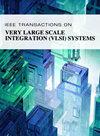A Real-Time Rotation Calibration for Interchannel Offset Mismatch in Time-Interleaved SAR ADCs
IF 2.8
2区 工程技术
Q2 COMPUTER SCIENCE, HARDWARE & ARCHITECTURE
IEEE Transactions on Very Large Scale Integration (VLSI) Systems
Pub Date : 2024-10-16
DOI:10.1109/TVLSI.2024.3472095
引用次数: 0
Abstract
This brief presents an on-chip, real-time rotation calibration (RRC) technique aimed at alleviating the inter-channel offset mismatch in time-interleaved (TI) successive-approximation register analog-to-digital converter (SAR ADC). By leveraging auto-rotation calibration and self-compensation strategies in the analog domain, the proposed technique demonstrates robust performance across PVT variations. Two additional sub-channels are involved in the TI quantization mechanism, where the continuous rotation of the sampling clock distribution ensures their operation in calibration mode. To validate the effectiveness of the proposed calibration, an求助全文
约1分钟内获得全文
求助全文
来源期刊
CiteScore
6.40
自引率
7.10%
发文量
187
审稿时长
3.6 months
期刊介绍:
The IEEE Transactions on VLSI Systems is published as a monthly journal under the co-sponsorship of the IEEE Circuits and Systems Society, the IEEE Computer Society, and the IEEE Solid-State Circuits Society.
Design and realization of microelectronic systems using VLSI/ULSI technologies require close collaboration among scientists and engineers in the fields of systems architecture, logic and circuit design, chips and wafer fabrication, packaging, testing and systems applications. Generation of specifications, design and verification must be performed at all abstraction levels, including the system, register-transfer, logic, circuit, transistor and process levels.
To address this critical area through a common forum, the IEEE Transactions on VLSI Systems have been founded. The editorial board, consisting of international experts, invites original papers which emphasize and merit the novel systems integration aspects of microelectronic systems including interactions among systems design and partitioning, logic and memory design, digital and analog circuit design, layout synthesis, CAD tools, chips and wafer fabrication, testing and packaging, and systems level qualification. Thus, the coverage of these Transactions will focus on VLSI/ULSI microelectronic systems integration.

 求助内容:
求助内容: 应助结果提醒方式:
应助结果提醒方式:


